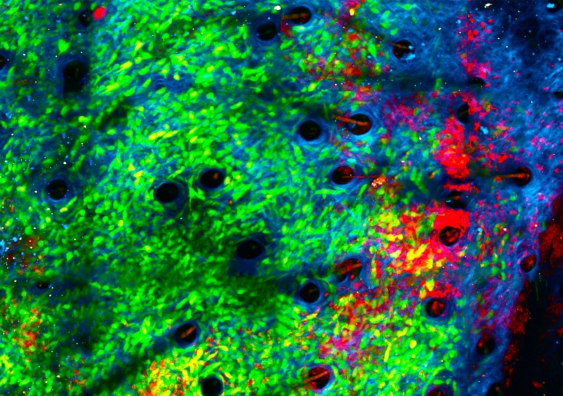蚊の遺伝子操作研究、人や動物の保護に役立つと研究者が説明 Researcher explains mosquito gene manipulation study, how it might help protect humans, animals
2023-03-13 テキサス A&M大学
この発見は、蚊と人間や動物に伝染する病原体の間で起こる生態学的および進化的相互作用についての新しい知見を提供しています。これらの研究成果を活用して、蚊媒介疾患の制御方法を開発することが期待されています。
また、この研究には、ジョンズ・ホプキンズ大学やカリフォルニア大学サンディエゴ校の研究者らとの協力も含まれています。今後も蚊媒介疾患の制御方法を模索するため、蚊の免疫反応や遺伝子編集技術の研究が続けられる予定です。
<関連情報>
- https://agrilifetoday.tamu.edu/2023/03/13/scientists-disable-protective-gene-in-mosquitoes/
- https://www.pnas.org/doi/10.1073/pnas.2213701120
黄熱病蚊Aedes aegyptiにおける蚊媒介ウイルスの病原性調節にRNA干渉が必須であること RNA interference is essential to modulating the pathogenesis of mosquito-borne viruses in the yellow fever mosquito Aedes aegypti
Glady Hazitha Samuel,Tyler Pohlenz,Yuemei Dong,Nese Coskun,Zach N. Adelman ,George Dimopoulos,Kevin M. Myles
Proceedings of the National Academy of Sciences Published:March 9, 2023
DOI:https://doi.org/10.1073/pnas.2213701120

Significance
Models of mosquito-borne disease transmission illustrate that the longevity of the insect vector is a particularly powerful factor in the calculation of basic reproduction number (R0). The mosquito must survive long enough after ingesting the pathogen to deliver infectious bites. Significant levels of pathogen-associated mortality in this host would have a detrimental impact on transmission. Here, we show that Aedes aegypti with a genetic lesion in Dicer-2 are acutely susceptible to multiple viruses associated with human disease, but not other types of infections. Further, we demonstrate that the pathology associated with these infections is primarily controlled through an RNA interference pathway that functions as a resistance mechanism. These results reveal insights into the transmission of many important diseases.
Abstract
While it has long been known that the transmission of mosquito-borne viruses depends on the establishment of persistent and nonlethal infections in the invertebrate host, specific roles for the insects’ antiviral immune pathways in modulating the pathogenesis of viral infections is the subject of speculation and debate. Here, we show that a loss-of-function mutation in the Aedes aegypti Dicer-2 (Dcr-2) gene renders the insect acutely susceptible to a disease phenotype upon infection with pathogens in multiple virus families associated with important human diseases. Additional interrogation of the disease phenotype demonstrated that the virus-induced pathology is controlled through a canonical RNA interference (RNAi) pathway, which functions as a resistance mechanism. These results suggest comparatively modest contributions of proposed tolerance mechanisms to the fitness of A. aegypti infected with these pathogens. Similarly, the production of virus-derived piwi-interacting RNAs (vpiRNAs) was not sufficient to prevent the pathology associated with viral infections in Dcr-2 null mutants, also suggesting a less critical, or potentially secondary, role for vpiRNAs in antiviral immunity. These findings have important implications for understanding the ecological and evolutionary interactions occurring between A. aegypti and the pathogens they transmit to human and animal hosts.


